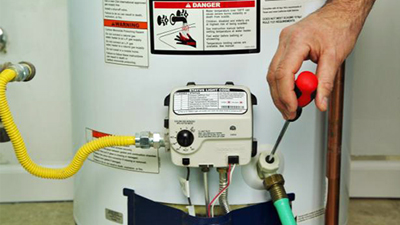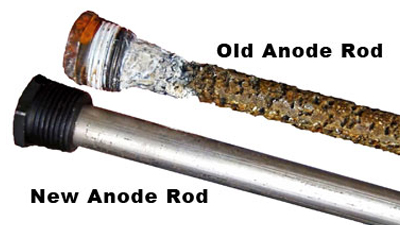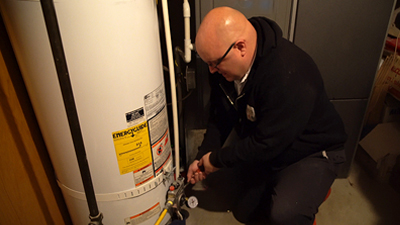Winter & Your Water Heater
Different seasons put different strain on the major systems in your home. For example, summer puts extra strain on your air conditioner whereas winter bears down on your heater. But one less obvious system that struggles during the changing seasons is your water heater. When the weather outside gets colder, your water heater works harder and is under additional pressure.
The following list can help you keep an eye on your water heater and ensure that it’s running as efficiently and safely as possible to get you through the winter.

1. CHECK TEMPERATURE AND PRESSURE VALVE (T&P VALVE)
Both gas and electric water heaters have a safety device called a temperature and pressure relief valve, or T&P valve for short. If, for some reason, the tank overheats or overpressurizes, the T&P valve opens and releases water and vapor to relieve the pressure. These valves should be checked at least once per year because if the valve doesn't operate correctly, the tank could actually rupture or explode.

2. FLUSH WATER HEATER
As water runs through your water heater, it leaves behind minerals that can build up in the tank, reducing your water heater’s energy efficiency and lifespan. It creates a layer of sediment that makes heating the water in your tank difficult. This sediment can also clog your water lines if it isn’t cleared. You can avoid these problems and increase the life of your water heater by periodically flushing the tank. It’s a great idea to go ahead and flush the tank each time you check the pressure relief valve.

3. CHECK ANODE ROD
Your water heater has been built with an internal device that helps protect your tank from corrosion. This device is called the anode rod, or sacrificial anode rod. This rod is made of aluminum or some other soft metal that attracts minerals, inviting them to break down the rod instead of breaking down the lining or structural material of your tank. Because of its importance, the anode rod should be checked annually to make sure it’s still functioning properly. If it becomes too corroded, it needs to be replaced immediately.


4. ADD PIPE INSULATION
Adding foam insulation to pipes is relatively easy to install. Insulating the cold-water pipe prevents condensation in summer and insulating the hot-water pipe helps keep the water hot when it leaves the water heater.
You can find foam pipe insulation at most home improvement stores. Buy some self-sticking 3/8-inch-thick foam pipe insulation that matches the pipe’s diameter. Slide the foam over the hot- and cold-water pipes as far as you can reach. Peel the tape and squeeze the insulation closed. If the pipe is 6 inches or less from the flue, cover it with 1-inch-thick unfaced fiberglass pipe wrap. Keep in mind that the top of your water heater should never be covered, however!

5. SCHEDULE MAINTENANCE
The most important element to any of the major systems in your home is ensuring that they are regularly maintained. As with most systems, you don’t notice how essential your water heater is until it goes out. During the winter months, this can be especially catastrophic (cold showers on a January morning, anyone?). However, if performing annual maintenance yourself sounds like a lot of work, no sweat. Call a licensed plumber to come and perform your annual maintenance for you. During your annual maintenance, your technician will check all of the components on the water heater to make sure nothing is wearing out or malfunctioning: they’ll check sensors, rods, valves, and more. They will also flush the water heater to ensure hard water buildup is kept at a minimum.

- 3 Essential Water Heater Maintenance Tips
- 4 Ways to Make Your Water Heater More Efficient
- What to Look For in Your House After An Earthquake
🎙️ Listen to Our Podcast - In the House
🎥 Watch our VLOG - Along For The Ride
Author: Amber Smith-Johnson
Copyright © 2022 by Any Hour Services
Jan 25th 2022

